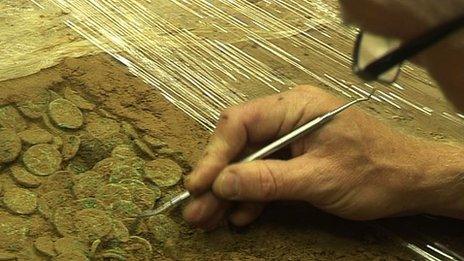Final coin removed from Jersey's huge Celtic hoard
- Published
The last of nearly 70,000 coins is to be removed later from one of the largest Celtic hoards in the world
The last of nearly 70,000 coins has been removed from one of the largest Celtic hoards in the world.
The cache - thought to date from about 30-50 BC - was found in Jersey by two metal detector enthusiasts after a 30-year search sparked by a tip-off.
Experts from Jersey Heritage removed the coins one by one from the field in Grouville for three years, with the last set extracted on Friday.
They said there was still work to do, such as cleaning and logging the finds.
More on the coin story, and other news from around the Channel Islands
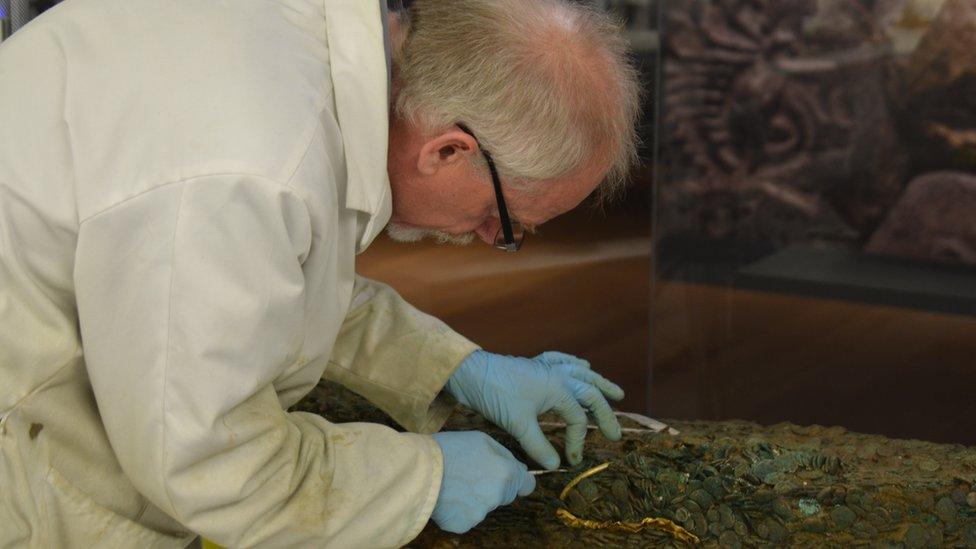
Neil Mahrer has been leading the team removing and cataloguing the coins one by one

It is thought the hoard was buried by a tribe fleeing from advancing forces of the Roman Empire
"This is a significant milestone for the team," said Neil Mahrer, senior conservator. "It has been painstaking but thoroughly intriguing work, which has delivered some very unexpected and amazing finds along the way.
"There is still plenty to do, and I am sure the hoard will continue to surprise us as we clean and record the material."
The hoard is believed to have been buried by the Coriosolitae tribe of Celts as they fled from the invading forces of the Roman Empire.
It was excavated by a team from the Societe Jersiais, Jersey Heritage and Guernsey Museum in 2012.
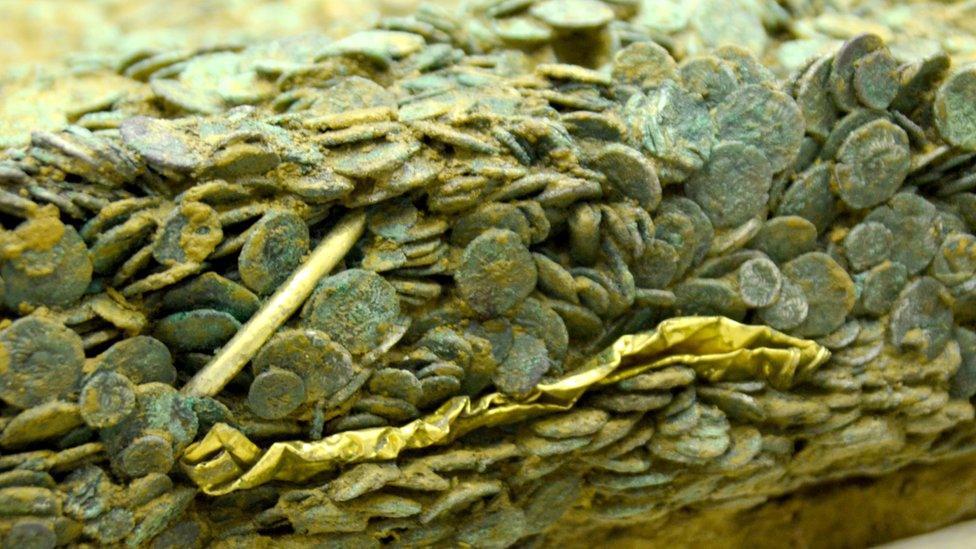
A number of gold neck torques, jewellery, glass beads, a leather purse and a woven bag of silver and gold were among the items found
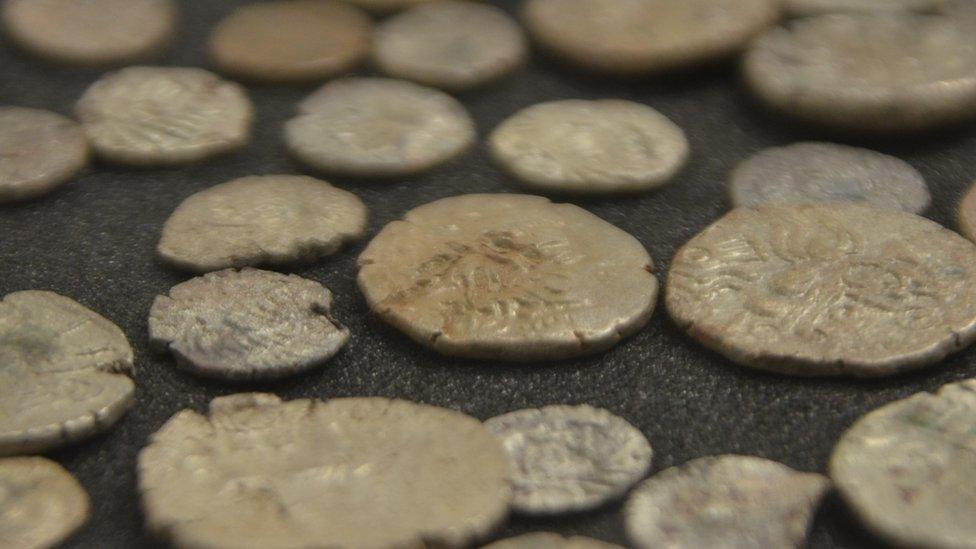
The exact value of the hoard is yet to be calculated and where it will end up remains undecided
Known as Catillon II, the Iron Age coin hoard is about six times bigger than any other Celtic hoard found in the world.
It also includes a large number of gold neck torques and other pieces of jewellery, as well as glass beads, a leather purse and a woven bag of silver and gold work.
Now the hoard has been separated, it will be valued and Jersey's government will vote on whether to pay to keep it on the island.
When it was first discovered, its value was estimated at about £10m.
Two men who found a hoard of coins worth at least £10m look back on their moment of discovery
Reg Mead and Richard Miles spent three decades searching in fields near where it was found after being told folk tales of ancient coins being found nearby.
It was unearthed in 2012 and quickly made headlines around the world because it was said it could change the way experts view Iron Age trade.
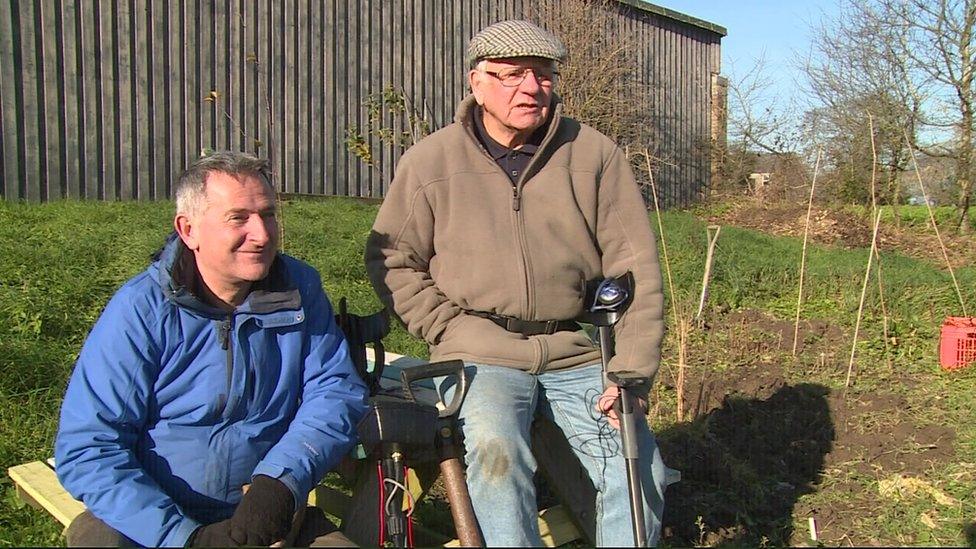
Richard Miles and Reg Mead: "There was something there that drew us to it"
Mr Miles said: "There was something there that drew us to it. Every Sunday, we would give it a try.
"The original story said the pot had been discovered on the tree line and we saw on old maps an old boundary that had been taken out.
"I found the first coin - and by the end of the first day we found 20 coins.
"Gradually, the tally began to climb."
That led them to find the hoard even deeper in the ground.
"We were literally scooping out the earth it was so deep," said Mr Miles.
"Reg said 'Give it one final try' and he forced the spade into the ground as deeply as he could and it struck something solid.
"You could hear the metal [striking the] hoard."
- Published11 September 2016

- Published28 July 2016
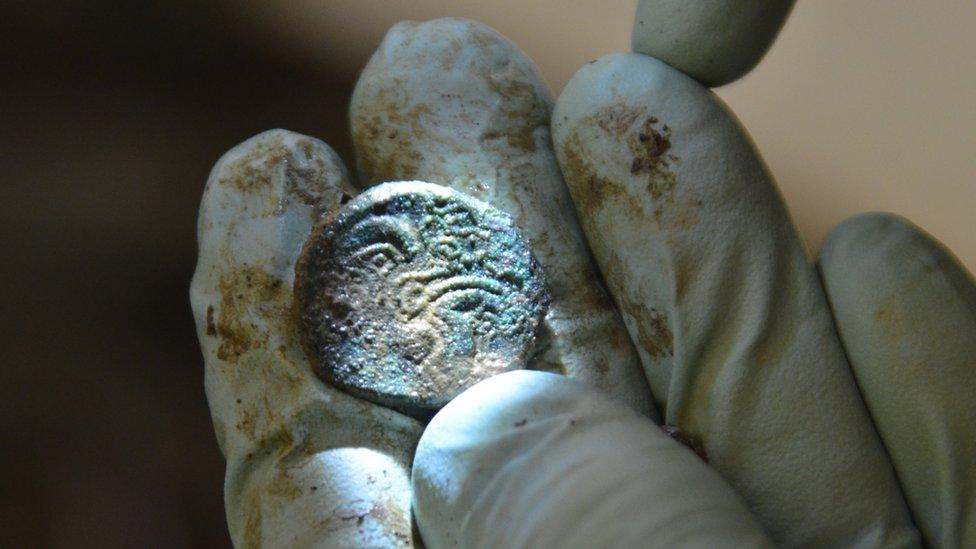
- Published15 April 2016
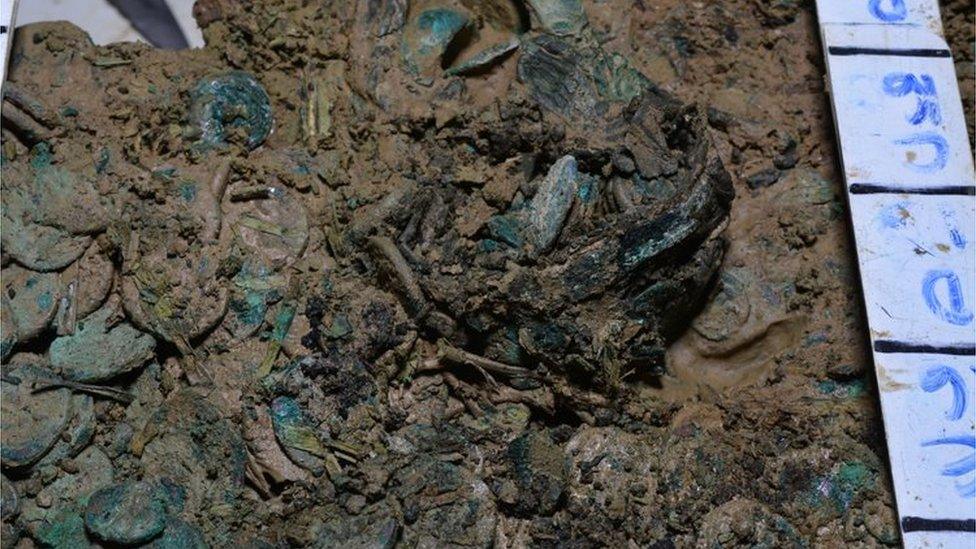
- Published24 November 2015
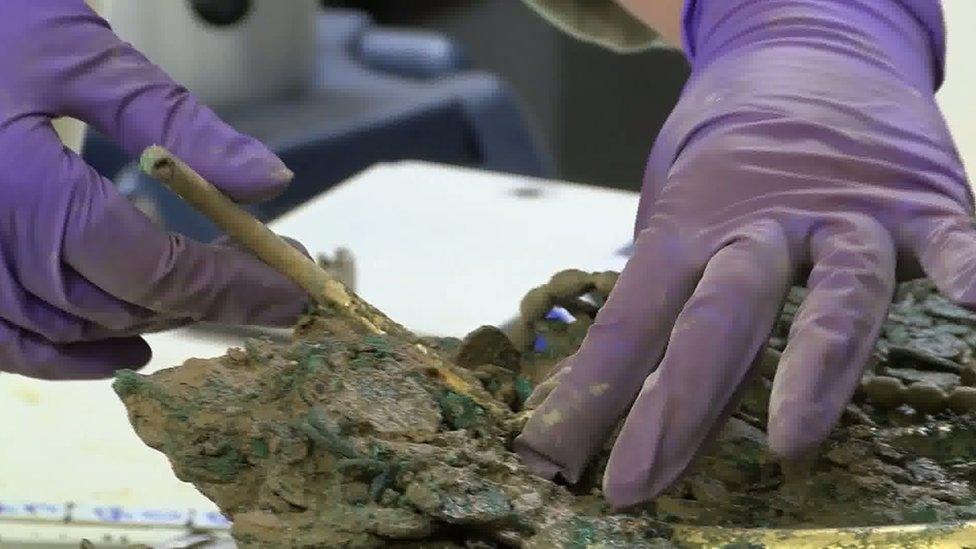
- Published21 August 2014

- Published21 June 2014
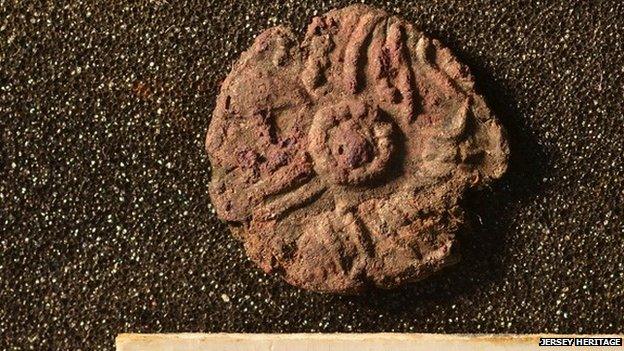
- Published10 May 2014
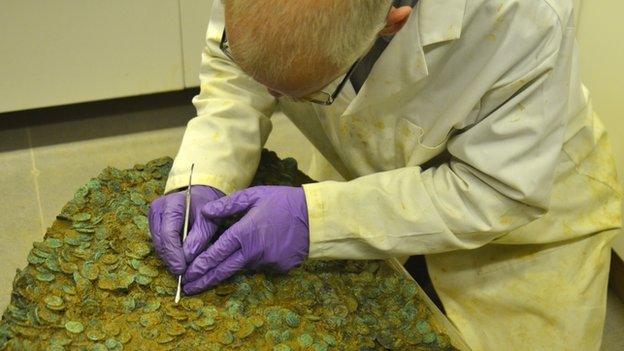
- Published8 May 2014
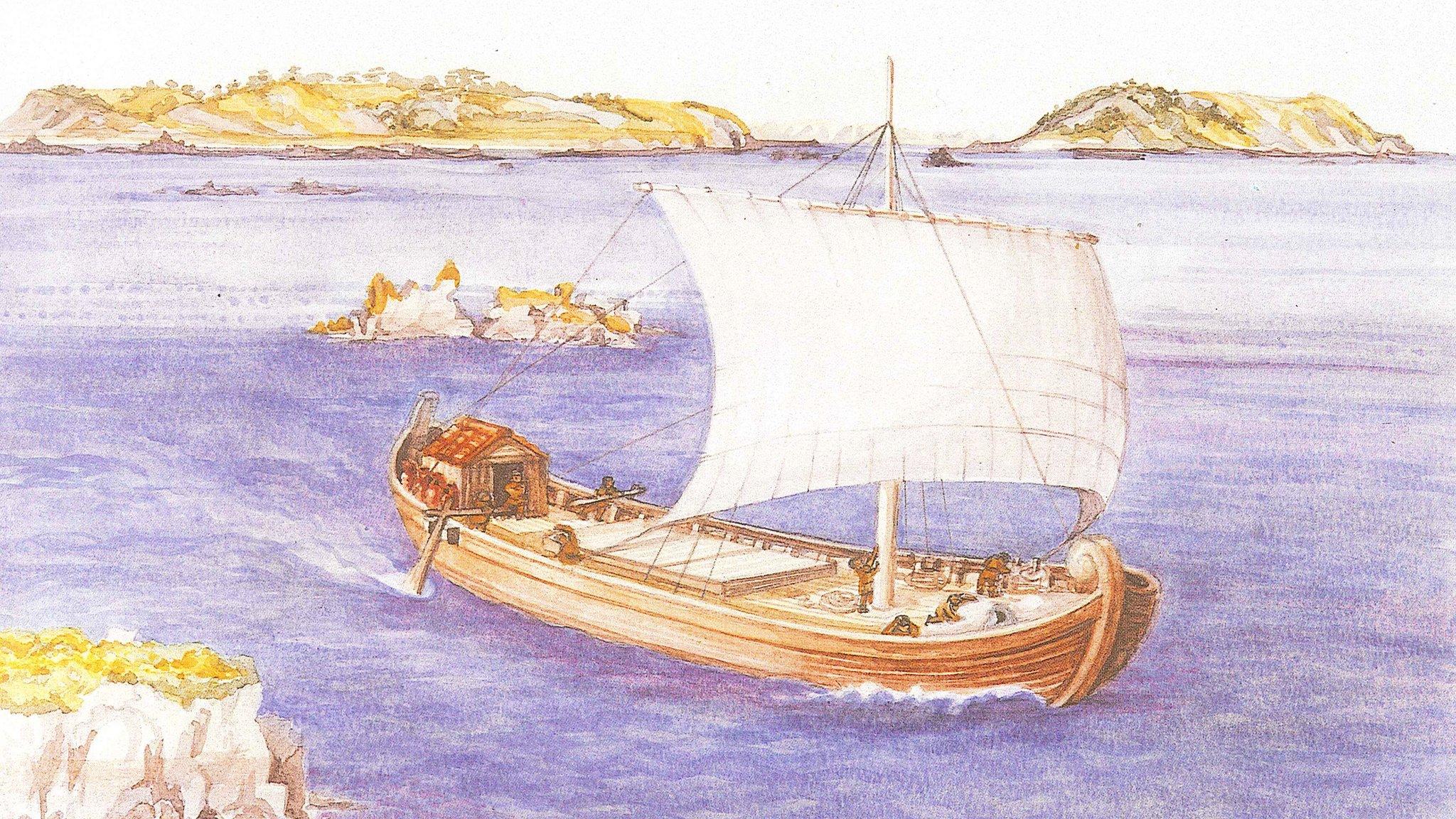
- Published12 June 2013
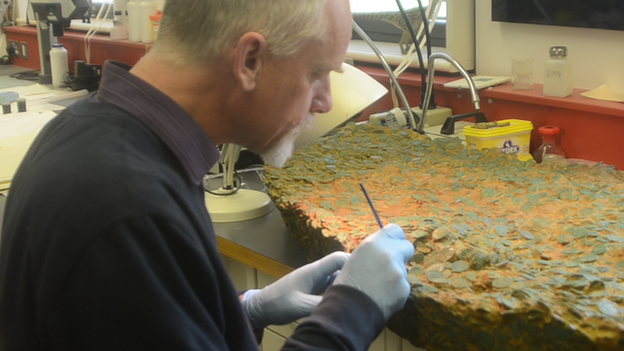
- Published13 September 2012
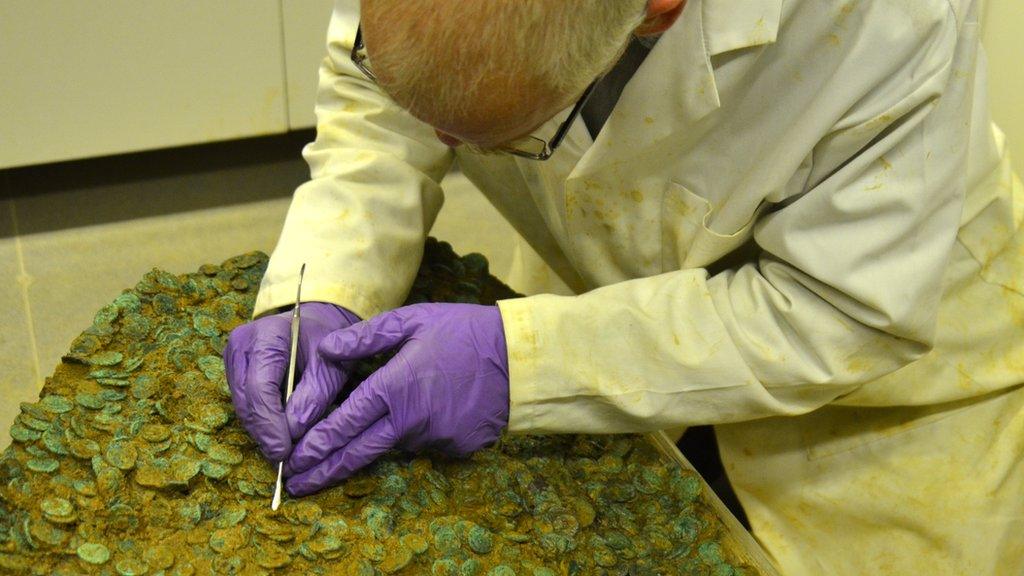
- Published26 June 2012
